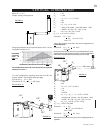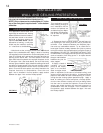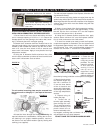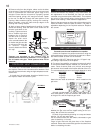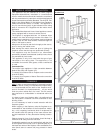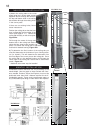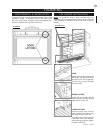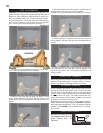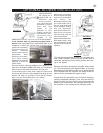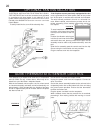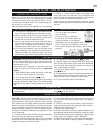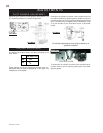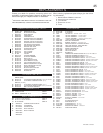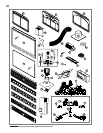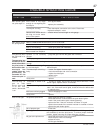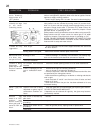Special offers from our partners!

Find Replacement BBQ Parts for 20,308 Models. Repair your BBQ today.

21
W415-0484 / A / 07.23.06
INSTALLATION TO
BE DONE BY A
QUALIFIED IN-
STALLER and
must be electri-
cally connected and
grounded in accord-
ance with local
codes. In the
absense of local
codes, use the cur-
rent CSA C22.1 CANA-
DIAN ELECTRICAL CODE in
Canada or the
ANSI/NFPA 70
NATIONAL ELECTRICAL CODE in the United States
If the fireplace was not previously equipped with a
blower: route a grounded 2-wire, 60hz power cable to the
receptacle / junction box. At this point, it must be strain
relieved and insulated.
The three slots on the
blower mounting
bracket allow ease of
adjustment when
attaching the blower.
For a quiet running
blower, do not allow the
assembly to sit on the
firebox base.
Slide the vibration reducing pad (A) into the clip (C) and up
against the threaded stud (B) at the other end. The blower
must be able to be positioned entirely onto the pad.
Tilt the blower onto its side. Slide it past the controls and
into the clip (C). Secure to the threaded stud using the lock
washer and wing nut provided. Ensure that the blower
does not touch the fireplace base or the firebox.
Attach the connectors
from the black and white
wires to the thermodisc
and secure the
thermodisc bracket to the
unit at the bottom left of
the unit using the ground
screw supplied. Ensure
that the thermodisc
touches the firebox wall.
Attach the connectors
from the black and red
wires to the blower.
Attach and secure the vari-
able speed switch using
the nut provided. Plug the
harness cord into the re-
ceptacle.
The wire harness provided in this kit is a universal har-
ness. When installed, ensure that any excess wire is
contained, preventing it from making contact with mov-
ing or hot objects.
Because the blower is thermally activated, when turned
on, it will automatically start approximately 10 minutes
after lighting the fireplace and will run for approximately
30-45 minutes after the fireplace has been turned off.
Use of the fan increases the output of heat.
Drywall dust will penetrate into the blower bearings,
causing irreparable damage. Care must be taken to
prevent drywall dust from coming into contact with the
blower or its compartment. Any damage resulting from
this condition is not covered by the warranty policy.
FIGURE 37
FIGURE 41
FIGURE 42
FIGURE 38
OPTIONAL BLOWER INSTALLATION
C
A
B
FIGURE 39
FIGURE 40



